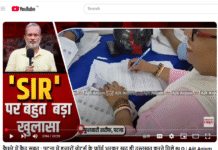Shreyams Kumar, the joint managing director of the Mathrubhumi media group in Kerala, explains how the state has taken on the Covid-19 pandemic better than any other in India, although it was one of the first to register active cases of the Coronavirus. Mathrubhumi is a leading Malayalam daily with 1.23 million subscribers, and the media group also publishes several leading print magazines. Apart from print, the news media group is engaged in television, radio, and digital. Founded in 1923, the group has published books since 1932.
Kumar tells us that due to the pandemic, media consumption in Kerala too has gone up in the past two months. “Even television news channel TRPs are up,” he says, “but newspapers have held their own with many young people now reading dailies for the first time. There is even a movement to have a regular newspaper reading time between 730 and 930 am every day in homes with school-going children.”
Circulation holds, advertising plummets
According to Kumar, newspaper circulations have held up citing a figure of 95% for his daily, although advertising has fallen sharply. In recent years, Mathrubhumi has been amongst the largest investors in new technology. Five new TKS 4 x 1 shaftless and automated press lines in brand new plants and ten Ferag mailrooms with drum inserters were installed in the last decade. The latest TKS 4 x 1 with Ferag mailroom and a new shaftless TKS heatset web offset press were installed in its newest plant in Ramanattukara near Kozhikode in July 2019.
Mathrubhumi made a video in end-March (available on Youtube) to allay the erroneous fears spread by fake news social media about the spread of Covid-19 through newspapers. The video shows the group’s modern newspaper production infrastructure in action as the daily is produced on automated equipment from antiseptic reel loading of the press with the automated mailroom system evacuating copies from the press folder. The mailroom system produces stacked, labeled, and poly-wrapped bundles that are loaded on the transports by gloved and masked personnel in a hygienic end to end system. Gloves and masks are provided to all the operators and also to the paper’s distributors and delivery personnel.
Shreyams Kumar is forthright when he speaks of Kerala’s healthcare and education system. The extremely pro-active handling of the Coronavirus by the state employees and its hands-on health minister, KK Shailaja known as ‘the Coronavirus slayer’ have become the stuff of legend.
What is more important is that citizens trust Kerala’s empowered local administrators backed by the hands-on state government. The state is widely admired for its early action in stopping the spread of Covid 19 by social distancing, seeking out contacts of infected cases, and early testing long before any other government in the country. To this day, there have been only three Covid19 related deaths in a geographically small state with a population the size of California.
A transparent and accountable system
Kumar praises the elected governments of both the political parties that tend to alternately rule the state, saying that, “Successive governments of both parties have added to the healthcare and education systems in the state. The three-level panchayat system comprising panchayat, Zila, and block levels works in Kerala. The closest to the ground, third-tier elected workers know every family and spend 80% to 90% of their time on the street meeting citizens.
“There is total accountability in the state, and the MLAs have to spend their development budgets on public welfare. Everybody is on their toes in the state, and the transparency here is such that the Covid-19 and other health and education data coming out of Kerala is 99% correct.”
Kerala’s near-100% literacy for more than 25 years, its low fertility rate, and the export of skilled workers and nurses and doctors to the world’s great public hospitals are legendary. Kumar, a former two-time MLA from Kalpetta constituency, is knowledgeable about the state’s education system. He says, “Every state government has invested in the government schools and textbooks are provided free from one of the best-equipped state textbook presses in the country. Every year a large proportion of the local development funds of the MLAs are spent on schools. The 10,000 to 15,000 government schools all have modern environments with computer facilities. These are quite apart from the government-aided schools and the private schools in the state.”
Kumar is also vocal about the library movement in the state, which has thousands of libraries administered by the library council, which is also an elected body. He takes pride in the state funding of both local libraries and grants to higher education, including the medical colleges from which the doctors and nurses are head-hunted by hospitals around the world.

Newspapers in Kerala have always been hyperlocal
The state is clearly well equipped in dealing with disasters as it has experienced two severe floods in the last three years and also an outbreak of the Nipah virus in 2018. Newspapers in Kerala have always been about community – they are competitively hyperlocal and even granular in their coverage. Every distributor and hawker sees themselves as a stakeholder in both the product and the supply chain.
Shreyams Kumar says that the print media has gained share among the youth in the Covid-19 pandemic and that its credibility has considerably increased. He says, “The state’s chief secretary had a conference call with the media recently and asked our help in controlling the spread of false news. He further entrusted us with taking on the fake rumors and fake news coming out of social media. In fact, in the past month, the number of messages and fake news on social media has gone down. “
















